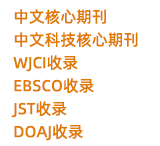



渗透指数在黄土丘陵沟壑区径流输沙与覆被格局关系研究中的适用性
刘宇
渗透指数在黄土丘陵沟壑区径流输沙与覆被格局关系研究中的适用性
The validity of Leakiness index in coupling runoff and sediment delivery and vegetation cover pattern on the Loess Plateau
| {{custom_ref.label}} |
{{custom_citation.content}}
{{custom_citation.annotation}}
|
/
| 〈 |
|
〉 |